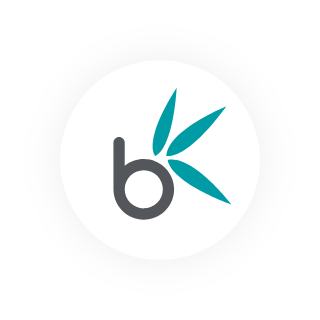Call to action (CTA): what are they & how do you use them?
The meaning of a call to action is just a piece of content that will make a viewer, reader, listener or watcher act. The classic, original and possibly most familiar CTA is ‘click here’. Almost all landing pages have some form of CTA, which is a short piece of persuasive writing. Good calls to action result in the following actions from the user:
So, whatever you might want someone to do on your website – the call to action is crucial. But what type is best for you? We help a range of websites to improve their performance with, among other things, compelling CTAs. As a result, we are well-placed to share some knowledge.
If you need an expert opinion on how you can improve your site – why not give us a call or get in touch?
Call to action examples & types
There are several ways that you can nudge someone into doing something on your website, such as by using the following types of calls to action:
An enticing CTA
Many websites use a sticky call to action to get users to subscribe, sign up or even buy a product. Sticky CTA headers come in various forms, but they look like an extra URL bar on the site, which ‘sticks’ as you scroll down. There is often a button or email entry box on a sticky CTA.
Sticky headers are good because you can give a lot of information to people while always having the CTA present. So, whenever the user is ready to jump from the considering stage to the decision stage – the call to action is always there and ready to go.
‘Stickys’ are excellent for mailing lists and downloads, but also buying. Sites with only one thing to sell most often benefit from the eCommerce sticky CTA – as too many products will make the header much too busy to navigate comfortably. Service sign-ups also work well.
Exit-intent popups
The bounce rate of a website is a key indicator of its performance, and exit-intent popups work by nudging the user to continue the action they have started. Exit-intent popups are similar to a ‘Are You Sure You Want to Quit’, box – but for digital marketing.
Exit intent gives you one final chance to get a user to act, or get them to give you some information – so, it’s not going to be your primary CTA but will be a solid back up.
As a user clicks ‘Back’ or they spend a certain amount of time on-site without doing anything, the exit-intent form will strike! It is a call to action that pops up over the site and reminds the user to continue – or gives them information on how to do so.
eCommerce sites can benefit from exit-intent calls to action to reduce shoppers bouncing before finishing their purchase. Publishers can also use the bounce or idle time to give the user one last chance to subscribe to an email or mailing list too.

CTA buttons
Whether it’s ‘Buy now’, ‘Click here’, or anything else – sometimes a big red (or other colours) button will make a user take the plunge. Buttons work similar to links, but use simple web design to spice it up and help the CTA stand out from the text content of a page.
eCommerce sites benefit greatly from buttons, but getting sign-ups or free trials of services is also something a button helps with. Video and audio content will also have a lot higher conversion rates with a ‘Play now’ or ‘Listen here’ type of call to action, which also uses buttons.
Buttons CTA’s are also fantastic for mobile marketing, as it’s usually harder to click a little piece of text in a hyperlink than tap a chunkier button graphic almost like an app experience, but on the web page itself. Sometimes buttons with contrasting colours can stand out and get a click.
Chatbots
If you really want to capture leads, chatbots are excellent CTA’s. They appear on the page at the bottom, usually, and will typically make a sound when they start ‘talking’ to the user – something that can provoke a response and get a user to ask their question to you directly.
Chatbots aren’t necessarily robots from start to finish, typically after a ‘Hi, how can I help?’ the bot will be taken over by a human – who can respond to the query they have. Bots can be set up to send a message to your phone so you can respond instantly and never miss an inquiry.
Using chatbots is great for services, not so much for products. Chatbots are at the top of the sales funnel and will require human interaction, so they are a bit more involved. But, if you need to interact with a person to make them convert they work well.
One advantage of chatbots is that once you get a reply you can instantly respond. Hook them in and persuade them with your chat-based sales pitch.

Text and hyperlinks
The classic form of a call to action is a clickable link. You can put almost anything into a simple hyperlink, so they are incredibly versatiles. However, you might find that they are difficult to get right in terms of how they affect your content.
Try using a short link ‘click here’ or similar should suffice, long sentences such as ‘click here to view our range of items’ are a bit long and might disrupt your content in a visual sense. Text calls to action are a great example of ones everyone can do.
Linking to a relevant page is good for leading people deeper into a site, so they are good for publishers. However, buying products or services and even sign-ups can improve from text links – so they are a solid all-rounder and a top starting point.
Calls to action that use simple text links are not just on site, they could be on social media, in email marketing and offsite too.
What are the best call to action phrases?
When it comes to call-to-action phrases there is no definitive ‘best’, per se – it all depends on your website, business or other organisation. However, the best call to action phrases typically have the following characteristics:
As there is no best option, it can be difficult to determine what is the best possible phrase. The best way to do that is to use a quality digital marketing company that can assess the right type and phraseology for your calls to action.
What to avoid in calls to action?
Now that you know what you should do, let’s take a look at what you should avoid. It is quite easy to fall into several traps when implementing CTA’s across your site. The most important mistakes to avoid in calls to action include the following:
Unless you are a very famous brand, it’s also probably better to avoid mentioning it in your calls to action. Brand mentions not only confuse the reader in the CTA, but they also make them unnecessarily long too.
What’s the best font for a call to action?
Just like the best phrases, there’s no true ‘best’ for all types of websites. However, script fonts (the ones that mimic a person’s handwriting) are not a good idea. They do not fit the criteria for a good CTA, which should be a clear and easy to read font. Serif fonts are a very good choice!
In terms of font, you may need to consider brand too. Nothing is guaranteed – and there is no definitive answer to the best size of font for a CTA (apart from being big enough to read) or the colours of fonts.
How to improve your calls to action
The best way to improve almost everything on your website is to test things and find what works best. A strong A/B testing program of various CTA’s on a popular page will show you whether ‘Buy here now’ or ‘Shop here today’ is better, so test frequently.
Your website will never be ‘complete’, you will always need to improve and refine it for continuous, growing performance. Another option is to use a digital marketing agency that can provide consultancy and design services to help improve CTAs.
A call to action
You should now have a better idea of the meaning of calls to action, what they are and how to use the different types on a website. You should also have some better ideas of how to use them effectively on your site.
By using powerful call-to-action phrases you can increase the performance of your business. If you would like to discuss more on your website calls to action, we can help. Why not call us or get in touch today?


